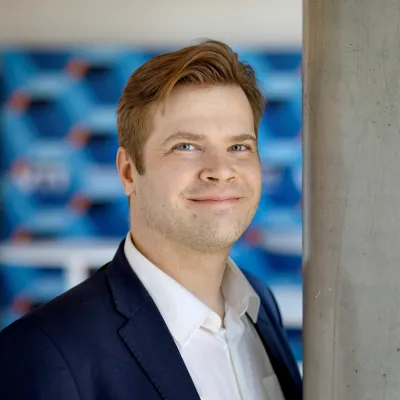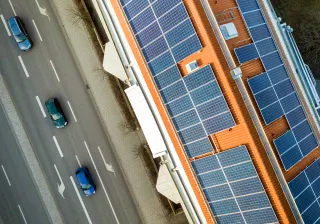Future cities will not think about whether there is enough building land but seek solutions to global challenges.
Let's just imagine for a moment. What would Helsinki look like if it were built today? We would not be considering whether the Sörnäinen shoreline tunnel helps or obstructs the flow of traffic, or whether the plan for new construction on the Elielinaukio Square is too heavy for the historical railway station site. We would start with a clean slate. We would build a city that is the best possible place for today's city dwellers to live in. We would probably plan a waste management system that enables circular economy – and as sustainable energy solutions as possible for housing and mobility.
This sounds like a fascinating opportunity, but the unfortunate fact is that the city would be hopelessly outdated the moment it was completed.
When managing and developing cities, it is not enough that we think about what is best for urban residents in the short term. Today's needs do not necessarily say much about what we will need in a few decades or a hundred years' time. Currently, we are not paying enough attention to major global development trends. They affect our lives as well, and cities must take them into account in decision-making.
If the future Helsinki were built now, the designers should consider what kind of matters would affect the residents’ lives in 2050. How would the opportunities offered by telecommunications, platform economy and quantum computing have changed the way we spend our leisure time and work? How would climate change have affected our lifestyles and what kind of energy solutions would we be using for mobility or heating our homes? Those planning future cities should be able to understand what kind of impacts future technologies will have and, above all, how we could exploit them.
What should cities focus on?
Cities and their directors of economic development are currently focusing on making cities inviting to attract working-age experts, i.e., taxpayers, to their areas. Cities are concerned about the price of land, services for families with children and support for corporate investments. This is, of course, a good thing. However, too short-sighted partial optimisation can lead to money and time being spent on irrelevant issues.
When I was young, everybody had a driver's license. Today's young people no longer acquire a license but rely on public transport. The nature of work was also changed by the coronavirus pandemic, at the latest. The borders of Finland no longer restrict where the labour force or companies are located. You can work for a company in Oulu from California or vice versa. Young talents no longer want to commit themselves to serving a single employer, but offer their competence through platforms, thus being able to engage in interesting projects regardless of the employer or location. How can cities take such changes into account and prepare for them?
Large phenomena are no longer limited within the borders of nation states, no matter whether they concern the location of companies, the impacts of climate change or ageing. At present, the competition over taxpayers’ money is also hard: consumers are taking their business increasingly to online shops and platforms located outside Finland or even Europe. In such a situation, it does not help much if one municipality has better opportunities to attract business investments than its neighbours. Instead, municipalities should join their forces to consider how to make the area an internationally attractive target for investments.
To make cities succeed in the turbulent future, they should be managed in an impact-oriented way.
This is made possible by two things in particular: the increased amount of information and the tools that provide us with a better look into the future. They will enable us to anticipate the impact of the decisions made and to manage change with increasing accuracy. Both town councillors and public servants need a new level of understanding of the challenges that will affect our future well-being and the ways of solving them.
Since the economy, labour or future challenges do not know administrative boundaries, optimising matters in the Finnish scale is no longer enough. Finland must engage in major international competition. We are currently spending too much time on the easy things, such as arguing about land use planning, while we use far too little time and effort on difficult issues: we do not see them as topical (yet), we do not know or dare to touch them. However, the rest of the world is changing at a much faster pace than Finland, and that is something we should wake up into here as well.
To succeed, we need to anticipate the future
We know that we cannot predict the future, but we can, and we must anticipate it. Public decision-makers should wake up to the fact that there are already tools available for this challenging task and they must be put to use to succeed.
For example, strategic foresight and impact leadership offer us some reliable methods. They enable us to understand future phenomena and create scenarios about how they progress. We can also build a strategy, guiding us in how we should react to phenomena, and determine what kind of impacts different decisions might have.
We also assist in making the change understandable and bringing forward clear grounds that will provide help for navigating through political transitions under changing circumstances. We calculate impact both in commercial terms and in relation to emissions, social indicators and environmental indicators.
Today, cities are facing systemic challenges, of which ageing, the energy transition and the circular economy serve as perfect examples. VTT can help lead the change so that the interdependencies between major issues and delays are taken into account and the desired business, social and environmental objectives can be achieved. Let me give you an example. If a certain change is made in early childhood education and care, how will it affect the need for mental health care in the future?
Finally, let us turn our eyes to Asia. There, climate change is a very concrete issue. Dozens of metropolises are wondering what to do when the sea level rises. For example, Jakarta, the capital of Indonesia, with over 10 million inhabitants, will be built in another location due to rise in sea level. To gain the highest benefits from investments, the investments made in the project are targeted into innovative solutions: this will raise the competence level of the whole country. In other words, the idea is the same as the one applied in the U.S. Apollo programme back in the day – we still keep on benefiting from the innovations enabled by the programme.
Things have been quite well in Finland for a long time. It has narrowed our perspective. Fortunately, we have not had as strong a need for change as some other parts of the world. But, at the same time, have we been left out of the opportunity for development that major challenges offer? If we do not develop ourselves at the same pace as others, what will happen to our power to appeal? If we use the ability to anticipate the future and the courage to act through it, we can make changes before we are forced to make them.
In Finland, public investments, and cities in particular, also offer opportunities to develop new solutions for both current and future needs, which will also challenge us in the future. We have the tools that enable us to make public investments to affect both our well-being and our economy at a broad scale. This way, Finland can be the best place for experts who have the whole world to conquer.





